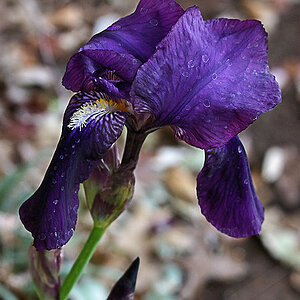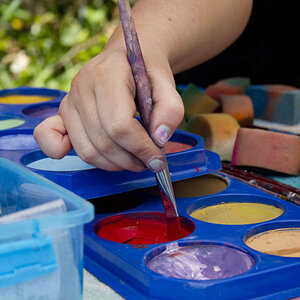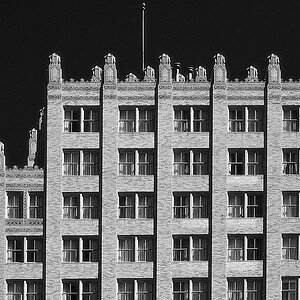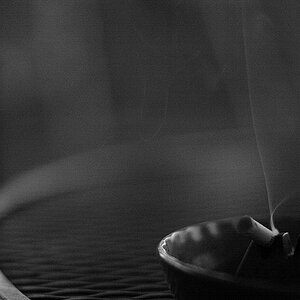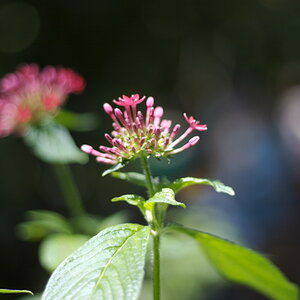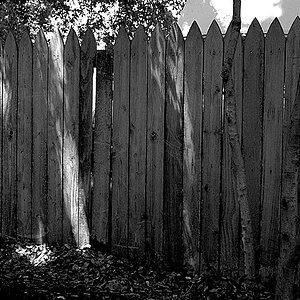Navigation
Install the app
How to install the app on iOS
Follow along with the video below to see how to install our site as a web app on your home screen.

Note: This feature currently requires accessing the site using the built-in Safari browser.
More options
You are using an out of date browser. It may not display this or other websites correctly.
You should upgrade or use an alternative browser.
You should upgrade or use an alternative browser.
Cleaning lenses and cleaning filters
- Thread starter PJcam
- Start date
john.margetts
No longer a newbie, moving up!
- Joined
- Dec 3, 2015
- Messages
- 1,100
- Reaction score
- 279
- Location
- Lincoln
- Can others edit my Photos
- Photos OK to edit
What you should not do is clean them. Seriously. Keep your fingers off the glass, any dust on the glass, just blow it off. The front of the lens does not need to be spotlessly clean.
If you have been somewhere noxious - a beach, perhaps - salt spray needs to be cleaned off but very carefully as it will contain fine sand. For that I would use a soft brush followed by my breath and a soft cloth.
If you have been somewhere noxious - a beach, perhaps - salt spray needs to be cleaned off but very carefully as it will contain fine sand. For that I would use a soft brush followed by my breath and a soft cloth.
PJcam
No longer a newbie, moving up!
- Joined
- Dec 26, 2017
- Messages
- 331
- Reaction score
- 113
- Location
- UK
- Can others edit my Photos
- Photos OK to edit
Thank you for your advice John, as a beginner I would have used a soft cloth and cleaning solution or a soft brush for dust.
I am going to get some filters, CPL and others, the CPL I will probably leave on and just change when circumstances need me to.
Excellent advice, would this apply to filters also? I would image it is easier to finger mark a filter easier than a lens.
I am going to get some filters, CPL and others, the CPL I will probably leave on and just change when circumstances need me to.
Excellent advice, would this apply to filters also? I would image it is easier to finger mark a filter easier than a lens.
Designer
Been spending a lot of time on here!
- Joined
- Apr 13, 2012
- Messages
- 18,505
- Reaction score
- 4,853
- Location
- Iowa
- Can others edit my Photos
- Photos OK to edit
Proper lens handling is foremost. When you change lenses, beware of any airborne dust. Don't allow any dust particles to enter the open camera body. Same for the back end of lenses. Keep them covered at all times. Do not touch the rear element or the mirror. Keep your fingers out of the light box.Which is the best for cleaning lenses and filters, soft brush, cloth and lens cleaning solution or both?
What should we not do?
Shooting in dusty conditions: Don't do it.
Use a very soft brush to knock off the larger particles of lint from the lens. If you get (you probably will get) fingerprints on the front element, use a cotton swab lightly moistened with distilled water. Do not use any drops of any liquid on the lens. You will use two, three, or more cotton swabs, (both ends) but they are cheap.
I don't think you should leave a CPL on your lens all the time. Put it on only when you need it for the conditions. This is rare, IMO. I don't have anything on the front except when I put on the lens cap. You can have a lens hood on as much as you can stand it, however. A lens hood will help keep fingerprints off and those little inconsequential bumps.
PJcam
No longer a newbie, moving up!
- Joined
- Dec 26, 2017
- Messages
- 331
- Reaction score
- 113
- Location
- UK
- Can others edit my Photos
- Photos OK to edit
Thank you for your advise designer, some good advise there.
I guess I was thinking a lens filter would protect the end of the lens, although it will it would probably be a pain to have to remove it to add another, (if I felt the need to), it is much simpler to add one than have to take one off to add another.
As a 'beginner' having only just purchased the camera last Friday, as you can see most of this is in my head, once I get out and play and experiment I will no doubt find out quite quickly. That said the advice you give is excellent and I thank you.
I laugh at your signature message, 'point, shoot, delete', we are so lucky now-a-days, not having to worry how many images we mess up using a film. Long may we point, shoot and delete (some images)

I guess I was thinking a lens filter would protect the end of the lens, although it will it would probably be a pain to have to remove it to add another, (if I felt the need to), it is much simpler to add one than have to take one off to add another.
As a 'beginner' having only just purchased the camera last Friday, as you can see most of this is in my head, once I get out and play and experiment I will no doubt find out quite quickly. That said the advice you give is excellent and I thank you.
I laugh at your signature message, 'point, shoot, delete', we are so lucky now-a-days, not having to worry how many images we mess up using a film. Long may we point, shoot and delete (some images)

SCraig
Been spending a lot of time on here!
- Joined
- Nov 12, 2011
- Messages
- 6,474
- Reaction score
- 2,450
- Location
- Nashville, TN
- Website
- sc-photo-tn.com
- Can others edit my Photos
- Photos NOT OK to edit
What he said. A CPL will cost you two full stops of light and can cause odd light conditions on a photograph depending on how it's oriented. If you feel compelled to leave a filter on a lens (most people don't, I frequently do) a CPL is not the right choice. Use a clear UV filter or something that will not degrade a photograph when you don't really need it.I don't think you should leave a CPL on your lens all the time. Put it on only when you need it for the conditions.
- Joined
- Mar 8, 2011
- Messages
- 25,160
- Reaction score
- 9,010
- Location
- Iowa
- Website
- pixels.com
- Can others edit my Photos
- Photos NOT OK to edit
Which is the best for cleaning lenses and filters, soft brush, cloth and lens cleaning solution or both?
What should we not do?
What to use and how to use it depends on what you're trying to clean off. A little dust? Lots of dust? Fingerprints? Water? Water spots?
To the OP, just to let you know this argument about filter verses no filter is older than the argument Nikon vs Canon, Mac verses PC, light beer verses good beer. So yes there are two sides to this discussion.
Personally I am a big believer in keeping a filter wether a polarizer or skylight or UV filter on my lenses at all times. As John mentioned it's best not to need to clean the lens so my thoughts - I can clean and or replace a filter easier than a lens. Over the years I have had to replace many filters and am always glad I didn't have to replace the lens. ( I try to shade my lens from direct light sources IOWs the whole no filter argument)
To the original question:
1) hand blower
then
2) brush
if work still needs it
3) micro cloth
and if work still needs it
4) (finger print) lens pen
and if work still needs it
5) solution onto lens tissue
my understanding is that the lens coating is a bio film any excessive moisture can lead to fungus growth never put the liquid solution onto the lens always onto the tissue first.
Personally I am a big believer in keeping a filter wether a polarizer or skylight or UV filter on my lenses at all times. As John mentioned it's best not to need to clean the lens so my thoughts - I can clean and or replace a filter easier than a lens. Over the years I have had to replace many filters and am always glad I didn't have to replace the lens. ( I try to shade my lens from direct light sources IOWs the whole no filter argument)
To the original question:
1) hand blower
then
2) brush
if work still needs it
3) micro cloth
and if work still needs it
4) (finger print) lens pen
and if work still needs it
5) solution onto lens tissue
my understanding is that the lens coating is a bio film any excessive moisture can lead to fungus growth never put the liquid solution onto the lens always onto the tissue first.
PJcam
No longer a newbie, moving up!
- Joined
- Dec 26, 2017
- Messages
- 331
- Reaction score
- 113
- Location
- UK
- Can others edit my Photos
- Photos OK to edit
Which is the best for cleaning lenses and filters, soft brush, cloth and lens cleaning solution or both?
What should we not do?
What to use and how to use it depends on what you're trying to clean off. A little dust? Lots of dust? Fingerprints? Water? Water spots?
At this stage it was just a question... a what if I need to.
As everything I have (not a lot) is brand new (last Friday) I don't have an issue yet. Just wanted advice so I don't cause myself issues later. The replies so far have all been very helpful. Thank you.
PJcam
No longer a newbie, moving up!
- Joined
- Dec 26, 2017
- Messages
- 331
- Reaction score
- 113
- Location
- UK
- Can others edit my Photos
- Photos OK to edit
To the OP, just to let you know this argument about filter verses no filter is older than the argument Nikon vs Canon, Mac verses PC, light beer verses good beer. So yes there are two sides to this discussion.
Hi jeffW, I take all replies on board, it is good to get a cross section of comments, it shows the argument is still running, though as a beginner I wasn't aware of the argument. That said, there wouldn't be filters if they were not needed or useful (to some).
I am sure I will be using filters, polarised definitely, reading comments ND very probably, Skylight a good chance. But as a newby, it is easy to want them all but not all would be used.
Helpful comment thank you
- Joined
- Mar 8, 2011
- Messages
- 25,160
- Reaction score
- 9,010
- Location
- Iowa
- Website
- pixels.com
- Can others edit my Photos
- Photos NOT OK to edit
A lens brush, a rocket blower, a bottle of lens fluid and a microfiber cloth will get 99.9% of your cleaning needs done.
Always start off with a rocket blower. This will remove as much loose dust and debris as possible, and you're not touching the lens. If that doesn't do it, then use the lens brush followed by the blower. Gently swipe the brush across the lens, then tap it when it's away from the lens to remove as much as you can from the brush.
If that doesn't get the dust off, you'll need to get more physical with the fluid and cloth. NEVER apply the fluid directly to the lens, apply it to the cloth and rub gently on the lens surface. You may need to do this several times, applying a different section of the cloth to the lens each time.
To get water, water spots or fingerprints off, you will still start off with the blower and brush to remove any dust or debris that might be present before you use the cloth.
Always start off with a rocket blower. This will remove as much loose dust and debris as possible, and you're not touching the lens. If that doesn't do it, then use the lens brush followed by the blower. Gently swipe the brush across the lens, then tap it when it's away from the lens to remove as much as you can from the brush.
If that doesn't get the dust off, you'll need to get more physical with the fluid and cloth. NEVER apply the fluid directly to the lens, apply it to the cloth and rub gently on the lens surface. You may need to do this several times, applying a different section of the cloth to the lens each time.
To get water, water spots or fingerprints off, you will still start off with the blower and brush to remove any dust or debris that might be present before you use the cloth.
PJcam
No longer a newbie, moving up!
- Joined
- Dec 26, 2017
- Messages
- 331
- Reaction score
- 113
- Location
- UK
- Can others edit my Photos
- Photos OK to edit
Personally I am a big believer in keeping a filter whether a polarizer or skylight or UV filter on my lenses at all times. As John mentioned it's best not to need to clean the lens so my thoughts - I can clean and or replace a filter easier than a lens. Over the years I have had to replace many filters and am always glad I didn't have to replace the lens. ( I try to shade my lens from direct light sources IOWs the whole no filter argument)
To the original question:
1) hand blower
then
2) brush
if work still needs it
3) micro cloth
and if work still needs it
4) (finger print) lens pen
and if work still needs it
5) solution onto lens tissue
my understanding is that the lens coating is a bio film any excessive moisture can lead to fungus growth never put the liquid solution onto the lens always onto the tissue first.
My thought were as you state jeffW, the filter protects the expensive lens. I can see the frustration of having to remove a lens to add another, although it is not a big job to do. Even less important if most images I would take are still images. For my camera, only an entry level one, Canon Rebel T6 EOS 1300D, I understand from what I read th last day or so a UV filter is not needed on an Auto-focus lens, so I am thinking as I get started I will purchase a CPL, a Skylight then some ND filters.
Your advice through the stages of cleaning subject to need is good. Thank you.
PJcam
No longer a newbie, moving up!
- Joined
- Dec 26, 2017
- Messages
- 331
- Reaction score
- 113
- Location
- UK
- Can others edit my Photos
- Photos OK to edit
What he said. A CPL will cost you two full stops of light and can cause odd light conditions on a photograph depending on how it's oriented. If you feel compelled to leave a filter on a lens (most people don't, I frequently do) a CPL is not the right choice. Use a clear UV filter or something that will not degrade a photograph when you don't really need it.I don't think you should leave a CPL on your lens all the time. Put it on only when you need it for the conditions.
Interesting comment SCraig, although a UV filter may not be needed on an auto focus lens, it is good for protecting the lens, but the lens cap does that. You can tell I am new to this I am sure.
What you say makes sense to me that the light will be reduced, but the compensation for that would be better looking skies and clouds, greener grass and only reflections on water and similar we would want. Am I right with this thinking?
- Joined
- Mar 8, 2011
- Messages
- 25,160
- Reaction score
- 9,010
- Location
- Iowa
- Website
- pixels.com
- Can others edit my Photos
- Photos NOT OK to edit
.............my understanding is that the lens coating is a bio film any excessive moisture can lead to fungus growth never put the liquid solution onto the lens always onto the tissue first.
It has nothing to do with the coating. You don't apply the fluid directly onto the lens simply to prevent it from running into the lens itself and ending up inside..... where it will dry and leave a stain.
SCraig
Been spending a lot of time on here!
- Joined
- Nov 12, 2011
- Messages
- 6,474
- Reaction score
- 2,450
- Location
- Nashville, TN
- Website
- sc-photo-tn.com
- Can others edit my Photos
- Photos NOT OK to edit
A CPL filter has two elements that rotate in a mount so that the direction of the light can be polarized. If you leave it on the lens all the time you are going to have to adjust it every time you take a photograph if the light changes. One position of the CPL does not work all of the time, you have to take the time to adjust it for the best effect.What you say makes sense to me that the light will be reduced, but the compensation for that would be better looking skies and clouds, greener grass and only reflections on water and similar we would want. Am I right with this thinking?
Similar threads
- Replies
- 1
- Views
- 453
- Replies
- 9
- Views
- 525

